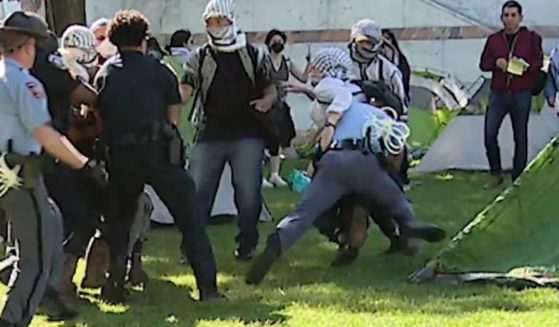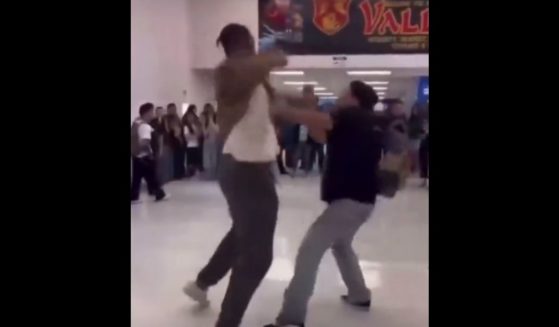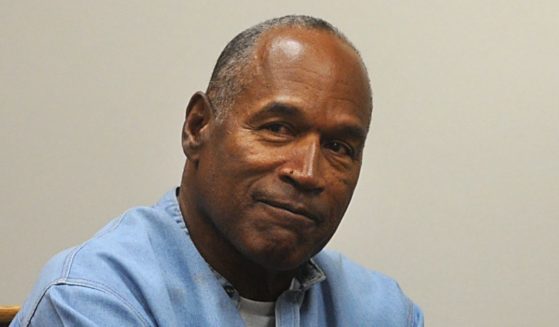California advances first-in-US rules on police shootings
SACRAMENTO, Calif. (AP) — A grieving mother choked up as she questioned why police didn’t use other tactics instead of killing her son. A deputy recalled the terror of second-guessing herself as she traded fire with a suspect who killed her partner.
The emotional testimony Tuesday came before California lawmakers advanced a first-in-the-nation measure restricting when police can use deadly force, one of two radically different legislative proposals seeking to cut down on deadly shootings in the nation’s most populous state.
The measure faces a tougher fight in the full Assembly. Even some supporters on the public safety committee said it goes too far and will require changes as lawmakers try to balance the safety of officers and those they’re tasked with protecting.
Last year’s police shooting of unarmed vandalism suspect Stephon Clark in Sacramento inspired the legislation that would allow officers to kill only if there is no reasonable alternative, such as verbal persuasion or other non-lethal methods of resolution or de-escalation.
“It’s time to make clear that the sanctity of human life is policing’s highest priority,” said Democratic Assemblywoman Shirley Weber of San Diego, adding later that her proposal “is designed to change the culture of policing in California.”
The committee’s chairman, Democratic Assemblyman Reggie Jones-Sawyer of Los Angeles, said a tougher standard will do little good without buy-in from law enforcement organizations.
Those groups are supporting a different plan, which is also before lawmakers, to require that every department have policies on when officers should use de-escalation tactics and other alternatives to deadly force.
Weber’s measure got party-line support. The eight-member panel’s two Republicans opposed the measure they said could make officers hesitate for a fatal second if they have to consider alternatives to lethal force.
That’s what Sacramento County Deputy Sheriff Julie Robertson faced. She testified how her partner, Mark Stasyuk, died last fall during a gunfight and she hesitated as the suspect shot at her with only his back exposed.
“I recall in that moment thinking that if I were to shoot him in the back, I would be the next officer in the news being scrutinized for my actions,” Robertson said. “The thought of having to second-guess my actions in that moment is frightening. … This bill makes me wonder if sacrificing everything is worth it.”
Elizabeth Medrano Escobedo told lawmakers that Los Angeles officers could have used other tactics instead of killing her son, Christian Escobedo, last year. Police said he was sleeping behind a parked car with a loaded handgun.
“This bill can save mothers from grieving the loss of their children, which is what I’m experiencing right now,” Medrano said, choking up.
Ciara Hamilton testified how Barstow police killed her cousin, Diante Yarber, last year after they said the car theft suspect hit two squad cars and nearly struck an officer. His family says the car was barely moving and that Yarber, who was black, might have lived had officers provided immediate medical attention.
“What does that tell us about policing in California and America? It’s that black and brown people are not safe from state-sanctioned violence,” Hamilton said.
The debate resonated personally for lawmakers.
Democratic Assemblywoman Sydney Kamlager-Dove of Los Angeles tearfully recounted finding four officers in her home responding to a false burglar alarm last fall. They treated her respectfully, yet Kamlager-Dove, who is black, said she started shaking and crying.
“And I realized I was crying because I was afraid. I didn’t want to make any sudden movements,” she said.
Kamlager-Dove broke down as she urged police organizations and reformers to reach consensus “because this hurts. … I don’t want any of us to live in fear.”
Republican Assemblyman Tom Lackey of Palmdale, who spent 28 years as a highway patrolman, recalled how a fellow officer killed someone in the line of duty and eventually ended his own life.
“When peace officers are placed in a position to where they feel like they have to use deadly force, no one can really understand that unless you’ve been in that position,” Lackey said.
Plumas County Sheriff’s Deputy Ed Obayashi, a use-of-force expert, called Weber’s measure “an exercise in legal futility” because he predicts judges will interpret the language the same way they do court rulings. Prosecutors would have to prove an officer was criminally negligent, which carries a high legal burden.
Weber acknowledges officers would have to egregiously violate a policy to face charges but expects the standard would deter shootings.
A Senate committee is expected to consider a police-backed alternative in two weeks. That measure would enshrine court standards into law, allowing officers to use deadly force when they have a reasonable fear of being harmed. The standard has made it rare for officers to be charged and rarer still to be convicted.
Law enforcement groups plan to amend the legislation “to ensure that we are truly putting forward the most comprehensive legislative solution to effectively reduce the use of force in our state,” California Police Chiefs Association president Ron Lawrence said.
The Western Journal has not reviewed this Associated Press story prior to publication. Therefore, it may contain editorial bias or may in some other way not meet our normal editorial standards. It is provided to our readers as a service from The Western Journal.
Truth and Accuracy
We are committed to truth and accuracy in all of our journalism. Read our editorial standards.












